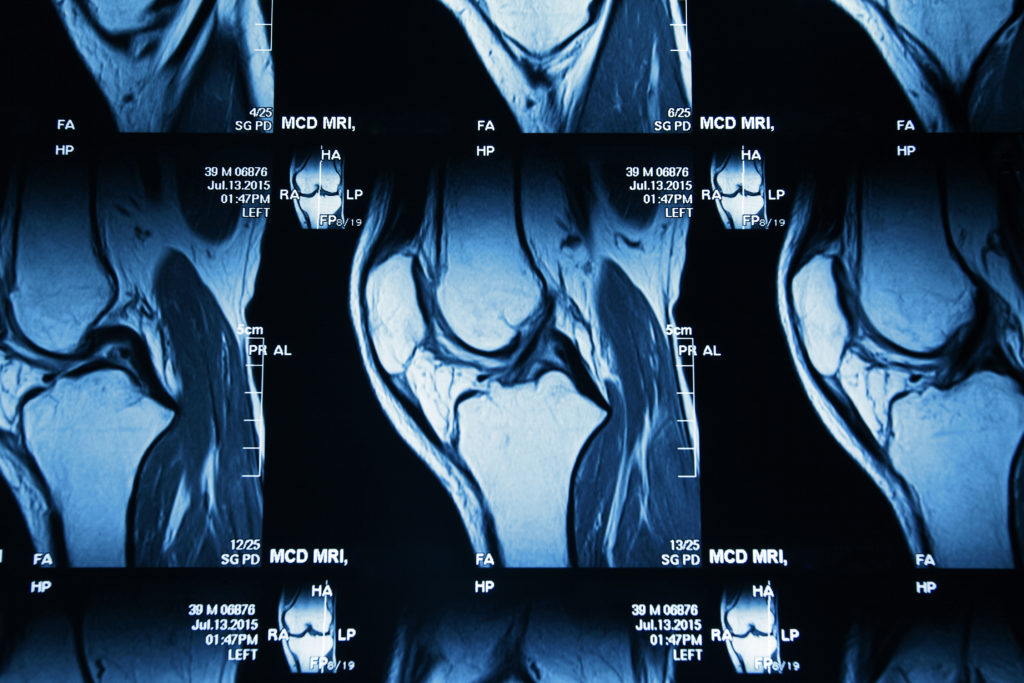
After An MRI Of The Knee: What’s Next?
After An MRI Of The Knee: What’s Next? https://phoenixspineandjoint.com/wp-content/uploads/2021/11/shutterstock_339032780-1024x683.jpg 1024 683 Phoenix Spine & Joint Phoenix Spine & Joint https://phoenixspineandjoint.com/wp-content/uploads/2021/11/shutterstock_339032780-1024x683.jpgAs always, if you have any red flags such as a history of cancer, fever with your knee pain, or you can’t walk or stand, then DO NOT WATCH THIS VIDEO, GO GET HELP AT THE HOSPITAL OR AT LEAST SEE YOUR DOCTOR OR URGENT CARE NOW. For everyone else, proceed.
The most common cause of knee pain is a sprain or strain. The MRI report may mention swelling, sprain/strain, or nothing at all. If your knee hurts like heck and the reports says the images are normal you probably have a sprain/strain. The treatment for sprain/strain is covered in my video on RICE + NSAID, which you can see here:

Your MRI report will comment on any ligament injury, in particular the anterior cruciate ligament. A ligament is a piece of tissue connecting two bones. The most common knee ligament injury is the anterior cruciate ligament tear. Stop and pivot moves in sports are a classic way to get an ACL tear. However, while everyone thinks ACL tears happen most often in elite athletes, it’s not true. Most ACL tears are the result of everyday activities and don’t even happen during sports: the most common cause of an ACL tear is getting out of a car. You know you have an ACL tear if your knee feels unstable. That means the knee slips and grinds as you walk, and you feel like you may be damaging yourself by walking. Hint: listen to yourself and stop walking. Go see an orthopedic surgeon. If you’re safe to undergo surgery they will recommend anterior cruciate ligament reconstruction.
Since your meniscus is made out of cartilage, and cartilage is technically a soft tissue, then you won’t be surprised to learn that MRI is a good way to show a meniscus tear. Meniscus injuries are a common cause of knee pain. Like ACL tears, a meniscus injury happens when force is applied to the knee, whether during sports or in everyday living. If your meniscus is injured then your knee will feel locked. Meniscus tears are treated by orthopedic sports medicine surgeons with surgery through an arthroscope. This type of surgery to clean out the damage is called meniscectomy. Some younger patients with complex tears require meniscal repair.
The space between the kneecap and the thigh bone is a joint that is lined with cartilage, and it is clearly visible on MRI. If the radiologist sees a problem with the cartilage in the patellofemoral joint they will refer to it as chondromalacia in the report. Chondromalacia of the patellofemoral joint is often now called patellofemoral syndrome. It hurts. Bad. But it can be stopped. Patellofemoral syndrome can be effectively treated with surgery through an arthroscope. Why not just replace the cartilage? We’re trying. There are several trials of experimental techniques to encourage cartilage to regrow in knee joints damaged by arthritis. Those treatments are promising, but they’re still experimental. If you want to participate in an experimental trial call us at 602 256 2525 and we will direct you as appropriate.
Your MRI report may also mention a loose body. The radiologist is not trying to insult your physique. Loose bodies are pieces of cartilage that break off the knee joint and are floating in the fluid space of the knee. This causes locking, similar to a torn meniscus. The treatment for a loose body is arthroscopic removal of the loose body. Recovery is minimal, and relief is instantaneous. This operation is a home run.
Whew. We’ve covered a lot. And there’s a lot more to go over. If you want a copy of this in a digital brochure then call us at (602) 256-2525 and we can email you a copy of Moving On after Knee Pain. Much of this material is covered on our website at https://bestpracti2stg.wpenginepowered.com/knee/. Look, we know this stuff is complicated. Please remember that help is always given at Phoenix Spine to those who call for it. But you have to call (602) 256-2525 to get it. The call and discussion with our Patient Service Coordinators are always free.
At Phoenix Spine and Joint, we believe cost should not keep you from the world-class orthopedic care you deserve. That’s why we work with all insurance and are in-network with most. We have 3 Valley wide locations: Goodyear, Scottsdale and Gilbert.
- Posted In:
- Knee Pain






